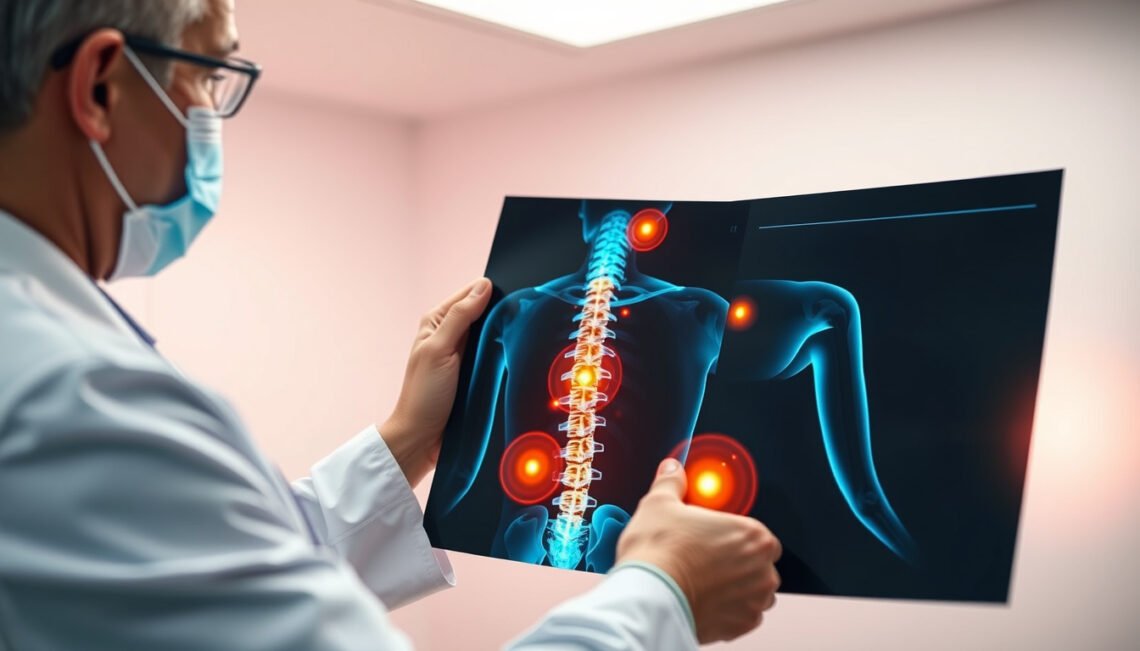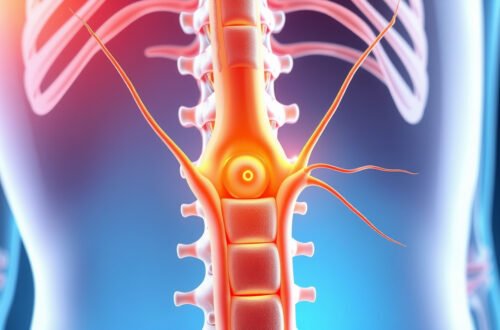Sciatica diagnosis is crucial for individuals experiencing persistent lower back and leg pain, as it helps identify the root cause of discomfort and guide effective treatment strategies. Sciatica is a condition involving irritation or compression of the sciatic nerve, often resulting in sharp, shooting pain that radiates from the lower back down through the leg. Timely and accurate sciatica diagnosis not only alleviates symptoms but also prevents potential complications. In this article, we’ll explore early signs of sciatica, how healthcare providers diagnose the condition, and the most effective treatment options currently available.
Understanding Sciatica and Its Early Signs
Sciatica refers to pain that affects the sciatic nerve—the longest and widest nerve in the body—running from the lower back through the hips, buttocks, and down each leg. Compression or irritation of this nerve can trigger symptoms that range from mild discomfort to debilitating pain.
Common Early Signs of Sciatica
Recognizing sciatica early can make a significant difference in treatment success. Here are typical early signs to watch for:
- Lower back pain that tends to worsen with prolonged sitting or standing
- Pain radiating from the lower back down to the buttocks and leg
- Numbness or tingling sensations in the leg or foot
- Muscle weakness in the affected leg or foot
- Burning or sharp shooting pain that follows the sciatic nerve pathway
- Difficulty moving or controlling the leg
If you notice these symptoms, especially if they worsen over time, it’s wise to seek a professional sciatica diagnosis for a thorough evaluation.
How Is Sciatica Diagnosed?
A sciatica diagnosis typically involves a combination of a detailed medical history, a physical examination, and diagnostic tests to pinpoint the exact cause of sciatic nerve compression.
Step 1: Medical History Assessment
Your healthcare provider will begin by asking about your symptoms, their duration, and any factors that exacerbate or relieve your pain. Questions may include:
- When did the pain start?
- Have you had any injury or trauma recently?
- Does the pain worsen during specific movements?
- Are there any accompanying symptoms such as weakness or numbness?
Step 2: Physical Examination
A physical exam focuses on assessing nerve function and muscle strength. Doctors may perform:
- Straight leg raise test: Lifting the leg while lying down to see if it triggers sciatic pain.
- Sensory testing: Checking for numbness or changes in sensation along the sciatic nerve route.
- Muscle strength evaluation: Testing leg muscles for weakness.
- Reflex tests: Assessing knee and ankle reflexes.
Step 3: Diagnostic Imaging Tests
To confirm the diagnosis and uncover the underlying cause—such as a herniated disc or spinal stenosis—imaging tests can be ordered:
- Magnetic Resonance Imaging (MRI): Provides detailed images of soft tissues including discs and nerves.
- Computed Tomography (CT) Scan: Can reveal bone abnormalities and nerve compression.
- X-rays: Helpful for ruling out fractures or bone spurs.

Step 4: Electromyography (EMG)
An EMG can help measure the electrical activity of muscles and detect nerve damage, providing additional confirmation for sciatica diagnosis.
Effective Treatment Options for Sciatica
Treatment for sciatica largely depends on the severity of symptoms and the underlying cause. Most cases improve with conservative care, but options range from self-care to medical interventions.
1. Self-Care and Lifestyle Modifications
- Rest and gentle activities: Avoid prolonged bed rest; engage in light walking or stretching.
- Hot and cold therapy: Applying ice or heat packs can reduce inflammation and soothe muscles.
- Posture correction: Maintaining proper posture while sitting and standing reduces nerve irritation.
- Weight management: Excess weight can place extra pressure on the spine.
2. Medications
Doctors may recommend:
- Over-the-counter pain relievers: Ibuprofen or acetaminophen can alleviate mild pain.
- Muscle relaxants: To ease muscle spasms.
- Prescription anti-inflammatories: For more intense inflammation and pain.
3. Physical Therapy
Guided physical therapy is often a cornerstone of effective treatment, focusing on:
- Stretching exercises to relieve nerve pressure
- Strengthening core and back muscles
- Postural training to prevent relapse
4. Interventional Procedures
If pain persists despite conservative measures, more targeted approaches may be needed:
- Epidural steroid injections: Reduce nerve inflammation and provide relief.
- Nerve blocks: Temporarily interrupt nerve signals causing pain.
5. Surgical Options
Surgery is usually considered only when nerve compression causes significant weakness, loss of bladder or bowel control, or unremitting pain after months of treatment. Common procedures include:
- Microdiscectomy: Removal of herniated disc material pressing on the nerve.
- Laminectomy: Removing part of the vertebra to relieve pressure.
The National Institute of Neurological Disorders and Stroke offers comprehensive information on sciatica and treatment approaches to guide patients through their options (source).
Bulleted Summary: Key Points in Sciatica Diagnosis and Treatment
- Early detection of sciatica involves noting symptoms like radiating leg pain, numbness, and muscle weakness.
- A sciatica diagnosis requires medical history, physical examination, and imaging tests for accurate assessment.
- Conservative treatments such as rest, medications, and physical therapy are effective for most patients.
- Interventional procedures and surgery are reserved for severe or persistent cases.
- Maintaining good posture and a healthy lifestyle helps prevent sciatica flare-ups.
Frequently Asked Questions About Sciatica Diagnosis
Q1: How quickly should I get a sciatica diagnosis if I have leg and back pain?
If symptoms persist longer than a week or progressively worsen—especially if accompanied by numbness or weakness—you should consult a healthcare provider promptly for a sciatica diagnosis.
Q2: Can a sciatica diagnosis be made without imaging?
Healthcare providers can often diagnose sciatica based on symptoms and physical exam, but imaging tests like MRI may be necessary to identify the exact cause.
Q3: Are there home remedies that can help after a sciatica diagnosis?
Yes, home remedies such as applying heat or cold, doing gentle stretches, and avoiding prolonged sitting can relieve discomfort after a sciatica diagnosis.
Final Thoughts: Don’t Ignore the Signs — Pursue Timely Sciatica Diagnosis and Treatment
If you’re experiencing the hallmark symptoms of sciatica, securing an accurate sciatica diagnosis is your first step toward relief and preventing further complications. Early intervention enables you to take advantage of effective treatment options—ranging from conservative therapies to medical procedures—and restore your quality of life. Don’t wait until the pain becomes unbearable. Consult your healthcare provider today to get a proper evaluation and personalized treatment plan. Prioritize your spinal health now to move pain-free tomorrow.





